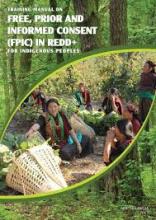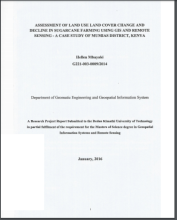/ library resources
Showing items 1 through 9 of 72.How state and customary authorities deal with land issues has important consequences for how they are viewed by citizens.
The project ‘Grounded Legitimacy’ explored how interventions in land governance by development organizations feed into the legitimacy of state and non‐state public authorities, and how these development organizations may better take ‘legitimacy’ into account.
This handbook contains basic information needed by indigenous peoples to be able to exercise their right to FPIC in the face of mining activities affecting their communities.
This manual aims to build the capacities of the indigenous peoples, networks and organizations to advocate and work for the effective implementation of FPIC for indigenous peoples in the activities and projects relating to REDD+.
The land registration system in Kenya was established in 1897 to support land registration for white settlers who had come into the country during the 19th Century.
This research gives an evaluation of Tana delta with regard to areas that are suitable for rice growing. The study area lies on the Eastern delta area of the Tana river of which 16000 hectares have been earmarked for commercial rice farming.
Agriculture is the backbone of Kenya’s economy. Agriculture in Kenya is characterized by low productivity due to low external inputs, lack of good farming practices, soil erosion, and other losses.
The Earth’s land surface is a key component of its climate system. Terrestrial plants, animals and human beings rely on the land surface for sustenance and existence; as such, its prevailing conditions and properties are essential to terrestrial life.
Land use/cover changes are pervasive with no clear understanding of their spatial extends, drivers and impacts to society. Land-use changes have become a key component in the current strategies for managing and monitoring the natural resources and environment changes.
Pagination
Land Library Search
Through our robust search engine, you can search for any item of the over 73,000 highly curated resources in the Land Library.
If you would like to find an overview of what is possible, feel free to peruse the Search Guide.







